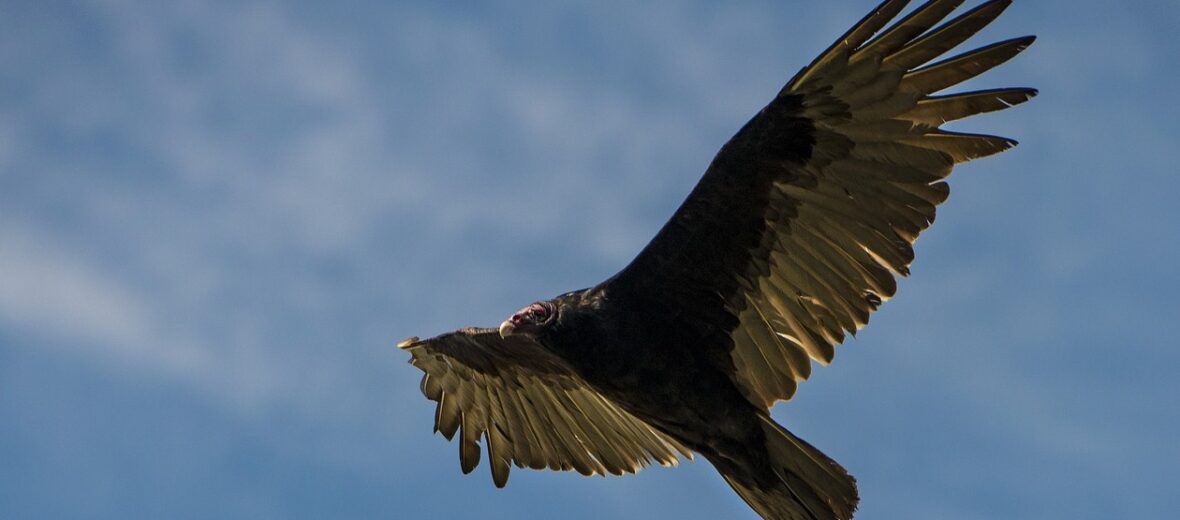
The turkey vulture is also called the turkey buzzard. They actually don’t actively hunt turkeys but rather prefer carrion, like other vultures. These vultures can be found from southern Canada throughout the U.S. and down south through southern South America and even in the Caribbean. They actually got their common name due to their bald head resembling that of a wild turkey’s. Due to their distribution and overall numbers, they are listed as Least Concern by the IUCN.
First the Stats…
Scientific name: Cathartes aura
Weight: Up to 3.3 lbs
Length: Up to 2.7 feet
Wingspan: Up to 5.83 feet
Lifespan: Up to 30 years
Now on to the Facts!
1.) Their scientific name is Latin for “cleansing breeze”.
2.) Their feet are built more like a chicken’s and are pretty much useless for tearing at carcasses. But they have a strong beak for that.
3.) The female lays between 1 – 3 eggs and deposits them into burrows, caves, crevices, and even hollow logs.
4.) These fascinating critters eat a wide variety of carrion (dead animals), from small mammals to dead cows. Insects, other invertebrates, and certain fruits are also eaten.
5.) Turkey vultures are almost exclusively scavengers and are rarely seen actually hunting live prey.
But wait, there’s more on the turkey vulture!
6.) Like some other birds, like the shoebill or marabou stork, turkey vultures will defecate on their legs and feet in an effort to keep themselves cool on hot days.
7.) They are able to save energy by gliding. They can also fly very low to the ground in an attempt to pick up the scent of dead animals.
Did you know…?
Turkey vultures, like all vultures, have no feathers on their heads. This helps them stave off bacteria and subsequent infections from the rotting flesh they consume.
8.) Turkey Vultures play an important role in the health of our ecosystems. As nature’s clean-up crews, they help eliminate rotting carcasses, which helps control the spread of diseases!
9.) With their incredible sense of smell, these birds are actually able to smell rotting carcasses from up to a mile away!
10.) It has been determined that turkey vultures can travel up to 200 miles in search of food!
Now a Short Turkey Vulture Video!
Also, check out the Critter Science YouTube channel. Videos added frequently!
Want to suggest a critter for me to write about? Let me know here.




Leave a Reply